The Review | The Ghost Teru 10 LC Review
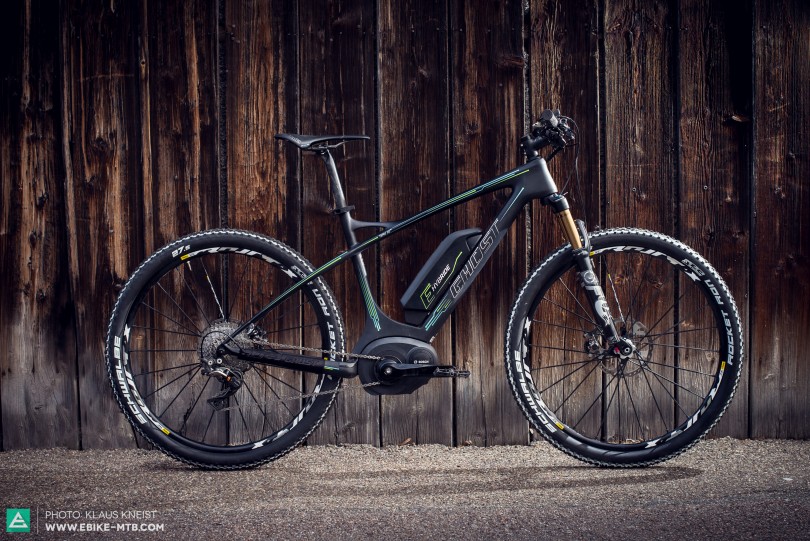
Who says e-bikes have to be heavy and cumbersome? With the Teru 10 LC, Ghost have created an impressive lightweight model that appears to fly up mountainsides even when you’re at a standstill. We launched ourselves through forests on their premium hardtail model, wondering if weight really is the decisive factor?
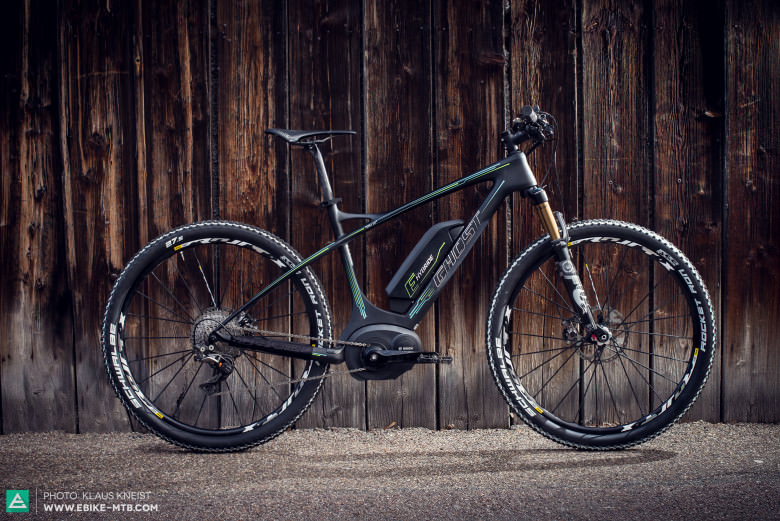
With manoeuvrable 27.5” wheels, the stiff carbon frame, tidy design and crafty internal cables look smoking hot at first glance. The FOX 32 FLOAT forks with 100 mm travel roll comfortably over rough ground and roots, letting you lockout remotely when necessary for sprint sections and streets. Stable and strong, the Mavic Crossmax XL wheels instil confidence on techy sections and you can rely on the Shimano XTR Trail brakes and their 180 mm discs to bring you to a satisfying halt. Weighing in at 16.85 kg in total, the spec is nicely rounded off with Ritchey WCS carbon components and Shimano XTR shifting, whose 11–40 tooth cassette essentially has the right gearing for any sort of riding – and even manages to function effortlessly even when motoring uphill at full gas.
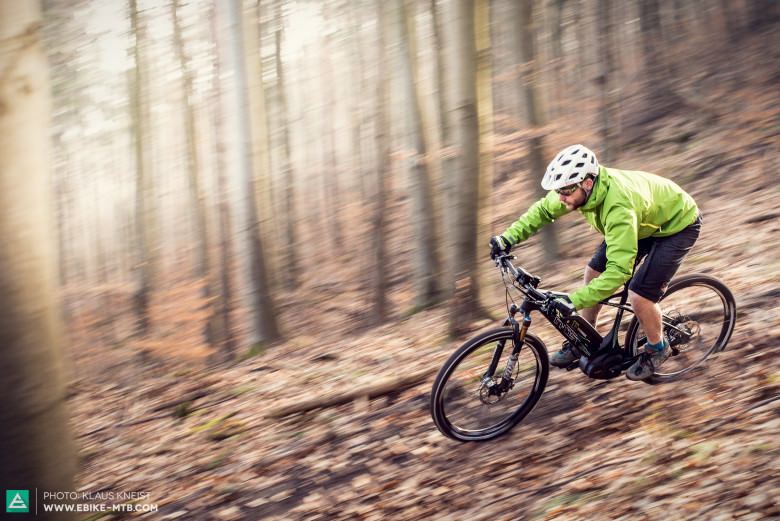
Thanks to its lightweight nature and 27.5” wheels, the Ghost Teru 10 LC can definitely be described as agile and manoeuvrable. The Ghost comes in with some great angles too: the steep 74° seatpost gives you the luxury of riding even the steepest sections like a king, and the well-considered 69° head angle offers sufficient stability at high speeds and has a more than positive influence on the steering. With the mid-drive motor’s low and central positioning, the handling isn’t negatively affected either. Well balanced with the weight across the wheelbase, it responds well to the rider’s commands. Given the low bottom bracket, you need to watch your pedal position a little on the trails to avoid any unwanted encounters with stones or rocks.
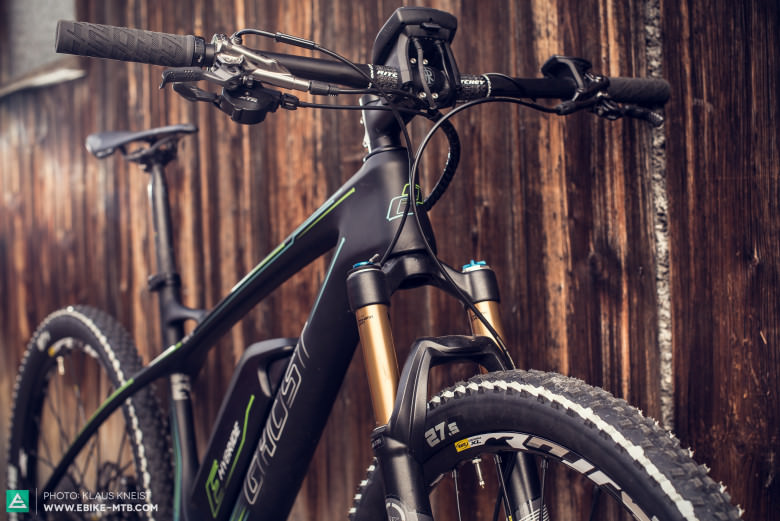
Naturally, once the motorised support ceases and you find yourself on a gentle incline – or even flat terrain – when you can easily ride over 25 km/h, the extra weight of the once swift Teru is glaringly obvious. But the bike is still pretty sweet to ride without the motor, taking you up and down climbs without too much excessive sweat dripping down your face. It’d be easy to imagine the Teru with a 45-km/h model; it’d be spot on for the woodland commute to work. But then you’d spec it with fatter forks, as the lean FOX 32s do flex visibly under the strain of the extra weight, although fortunately there’s no impact on their performance. With a faster version though you’d be a bit stuck; after all, it’s forbidden to ride on the forest’s fire roads and trails.
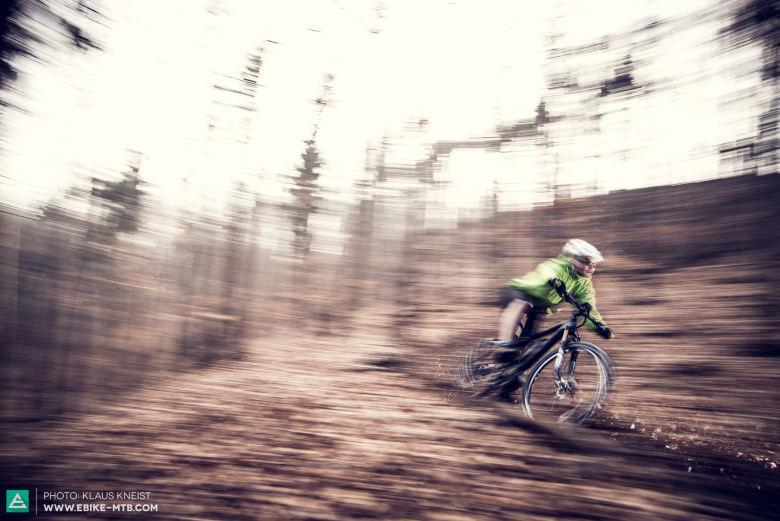
The motor has four modes, and the first two (eco and tour) are more than adequate for regular use in the woods. Sport, the third mode, is intended for super steep climbs. Opt for turbo, the ultimate mode, if you want to spare your legs the hard work. In general, sport mode gives you a generous push along the trails, but it does take a few pedal strokes to master the initial jerkiness. Once you’ve got that under control though, you’ll fly along flat trails, and you’ll love the motor on long, even climbs. This is where you’ll ride along contentedly at the 25-km/h limit, altering the motor support once the gradient gets a little tougher.

Unfortunately the Bosch motor doesn’t cut out when changing gears so it could be a little noisy if you’re changing gear under pressure. However, the XTR doesn’t seem to suffer from this and goes about its work happily. The Bosch motor does unfortunately use a significantly small chainring, and the chainline runs pretty close to the motor. When the ground is even slightly uneven, the chain rattles against the chainstay and the motor, making the derailleur vulnerable and damaging your overall impression.

When it came to kitting out the Teru, Ghost have mainly focused on weight. And at 16.85 kg, it doesn’t weigh much – although many riders would probably rate durable parts, comfort and great handling as higher priorities. So there’s a distinct lack of a dropper seatpost and a compact cockpit, which would be an outright plus point in terms of rideability and steering. Even though the 710 mm handlebars and 80 mm front stem are ergonomically faultless (1.78 m, frame size 48/M), they could have been a little wider (and shorter). For the purpose, they’ve chosen the wheels well – but for muddy and more technical trails, slightly fatter tyres wouldn’t do any harm. When it comes to the saddle, that’s naturally a question of taste; personally I don’t mind the Selle Italia SLR carbon saddle, and it suited me fine on longer rides even without a chamois. There are definite minus points for the rather painful grips if you’re riding for a long time. Given the price of the bike, you’d expect something of a better quality with more comfort (for example, something from Ergon, or keeping the weight in mind, the ESI silicon grips).
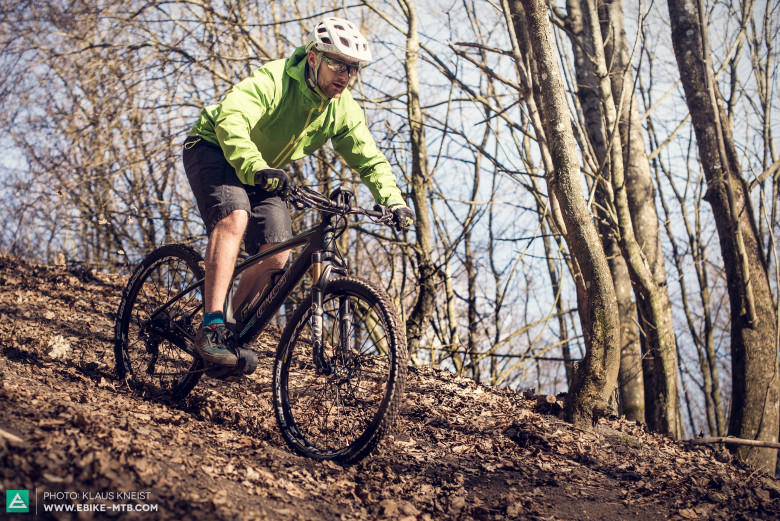
The Teru 10 LC has positioned itself somewhere between the ultimate lightweight bike and a stable all-rounder. On one hand, it wants to be as light as possible, but on the other hand it still wants to be fun to ride on the trails. That’s why Ghost have chosen XTR Trail brakes instead of the Race version, stable wheels and a – in this case too long – aluminium stem, but conversely, they’ve gone for a lightweight saddle, moderately wide handlebars and a carbon (rather than a remote) seat post. And the wheels are somewhere in the middle of this. We’d like a more cohesive setup to make the bike seem much more complete, as the frame shows masses of potential to go in either of these directions. Given the setup as it’s sold, it is ideal for regular and sporty to-and-froing over hilly woodland paths, taking you over some gentle trail sections and letting you arrive at the office without having broke too much of a sweat. Similarly, head out on the Teru for a 70 km weekend ride for fitness, or a quick post-work ride to catch the last rays of sun.

Conclusion
Is it worth the high price tag? The lightweight element of it (even if does lack some cohesion) is where it counts: compared to the still brilliantly-specced Teru 9 LC, you’ve got to shell out an extra € 1,700 in return for shedding one kilogram. But for this, you get the best of the best. Our verdict: for those who usually wind through the woods on their 7 kg whippet, this motorised and more comfortable bike is great for a less sweat-inducing regular commute. And for those who are less bothered about weight and high-end functionality, grab the little brother instead, the Teru 9 LC.
More information on www.ghost-bikes.com
Words: Andreas Maschke | Pictures: Klaus Kneist
Did you enjoy this article? If so, we would be stoked if you decide to support us with a monthly contribution. By becoming a supporter of E-MOUNTAINBIKE, you will help secure a sustainable future for high-quality cycling journalism. Click here to learn more.








